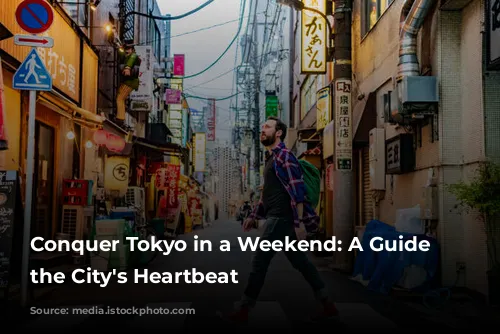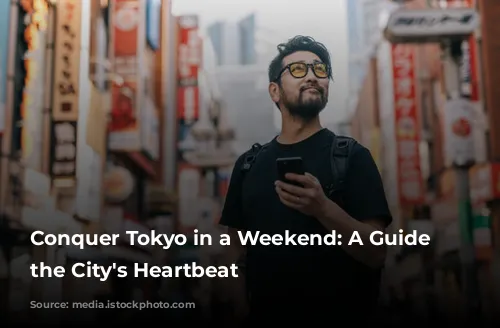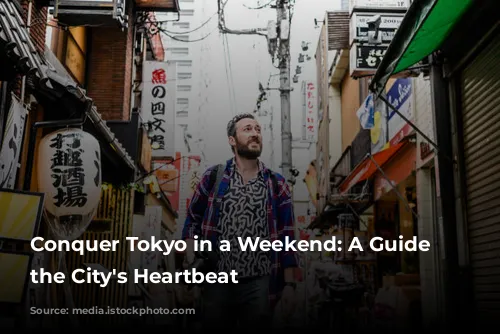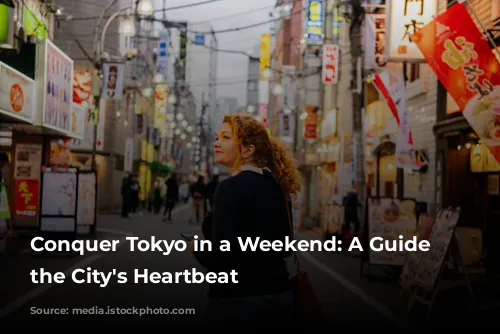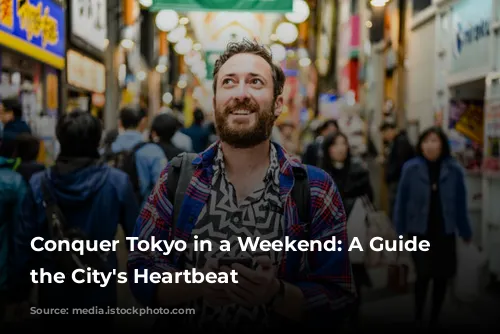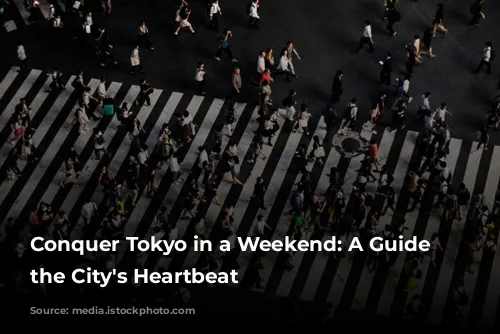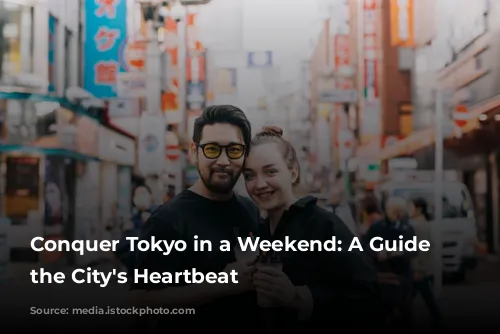Tokyo, a sprawling metropolis, can seem overwhelming, but with a little planning, you can experience its classic sights and local gems in a short time. This guide will take you on a whirlwind adventure, navigating the city’s energy while keeping your itinerary manageable.
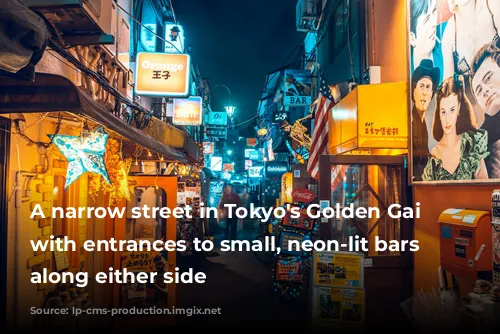
Shinjuku: A Gateway to Tokyo’s Modernity
Shinjuku, the city’s vibrant heart, is the perfect starting point for your Tokyo exploration. Its towering skyscrapers, dazzling neon signs, and bustling crowds embody the city’s energetic spirit. For panoramic views of this concrete jungle, ascend the Tokyo Metropolitan Government Building – a free experience offering breathtaking cityscape panoramas.
For a more intimate setting, enjoy cocktails at the chic New York Bar, offering stunning views and a sophisticated ambiance. Be mindful of the ¥2500 cover charge after 8 PM.
Shinjuku boasts an eclectic array of dining options: indulge in a fusion of traditional and contemporary Japanese cuisine at Kozue, sample classic Japanese pub fare at Kanae with its tempting selection of tempura, sashimi, and flavorful sake, or dive into the bustling atmosphere of Omoide-yokochō, a popular traveler spot serving affordable yakitori. After dinner, immerse yourself in Shinjuku’s bohemian charm at Golden Gai, a maze of tiny, eclectic bars housed in quaint wooden buildings.
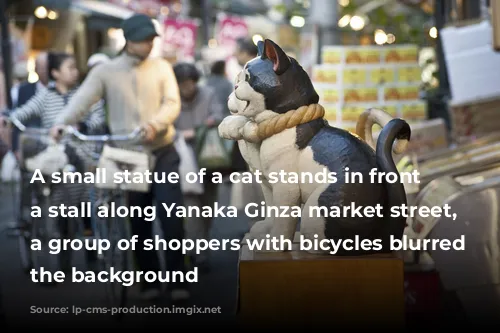
Harajuku: Where Fashion and Tradition Collide
Start your Saturday morning in Harajuku, a neighborhood where youth culture and traditional charm blend seamlessly. The Weekend Farmer’s Market @UNU draws a vibrant mix of food and coffee trucks, offering a casual brunch setting. For a more leisurely experience, pack a picnic and head to Yoyogi-kōen, a beloved green oasis for Tokyoites.
Stop by Little Nap Coffee Stand for a caffeine boost and grab Portuguese-style pastries at Nata de Cristiano as you enter the park from the west entrance (nearest subway stop: Yoyogi-kōen). On most weekends during warmer months, festivals with accompanying food vendors take over the plaza across from the park, providing an energetic atmosphere – although the quality can be variable.
While the park’s serene charm might tempt you to linger, Harajuku offers a vibrant array of activities. Immerse yourself in the city’s rich heritage at Meiji-jingū, a majestic wooden shrine nestled in a tranquil forest, or explore the neighborhood’s renowned shopping scene.
Laforet and House @Mikiri Hassin offer trendy Japanese designer wear, while smaller museums provide a glimpse into classical Japanese art. The Ukiyo-e Ōta Memorial Museum of Art showcases woodblock prints, while the Nezu Museum houses a collection of antiquities and boasts a beautiful strolling garden. For a relaxing break, delve into the world of Japanese tea at Sakurai Japanese Tea Experience – reservations are recommended.
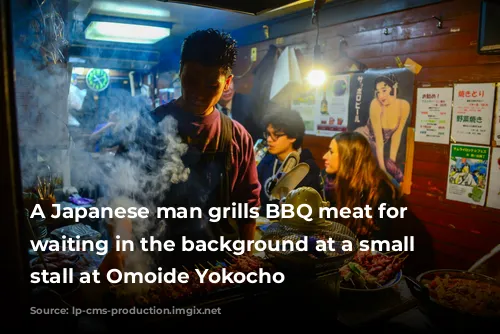
Shibuya: Where Tokyo’s Energy Surges
From Harajuku, take a short walk south to Shibuya, famous for its energetic Shibuya Crossing. Avoid the chaotic crossing by heading to Mag’s Park, a rooftop space offering the perfect vantage point to capture the intersection’s iconic overhead shot.
Enjoy dinner at d47 Shokudō, a reasonably priced restaurant within the towering Hikarie building (easy to spot amidst the crowds), offering regional specialties from all 47 prefectures of Japan. Shibuya’s nightlife is as exciting as its daytime energy, with bustling nightclubs like Contact and Circus Tokyo, which come alive after 11 PM. Karaoke enthusiasts will find plenty of options, including Karaoke Rainbow, open all night. For a more relaxed evening, explore Tomigaya, a sub-neighborhood of Shibuya known for its charming bistros and cafes.
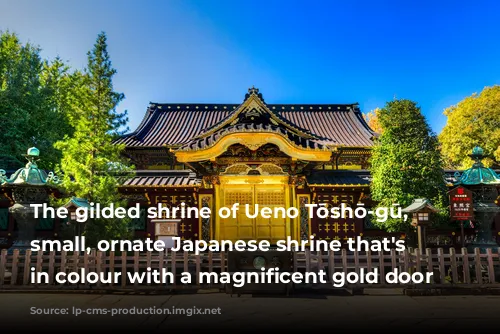
Yanaka: A Glimpse of Traditional Tokyo
After experiencing Tokyo’s modern side, embark on a journey to the city’s traditional east side, starting in Yanaka, a neighborhood that has preserved its early 20th-century charm. Its wooden buildings, now home to cafes, boutiques, and ateliers, create a nostalgic ambiance.
Begin your day with a cup of coffee at Kayaba Coffee, a classic kissa (first-wave coffee shop), and stroll through Yanaka Ginza, a mid-20th century market street, admiring the eclectic temples along the way. The Asakura Museum of Sculpture is a hidden gem showcasing a fascinating blend of east-meets-west architecture that was popular in early 20th-century Tokyo.
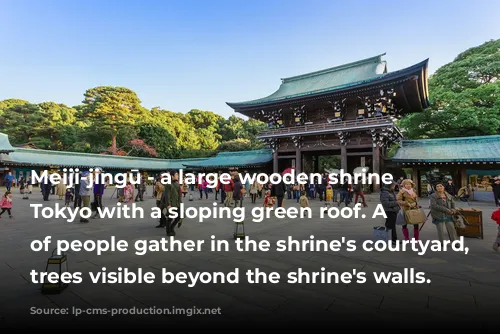
Ueno: A Cultural Hub
From Yanaka, walk or take the Yamanote line two stops from Nishi-Nippori to Ueno, a vast park brimming with cultural attractions. Visit the ornate Ueno Tōshō-gū shrine, a stark contrast to the somber Meiji-jingū, and the historic Kiyomizu Kannon-dō temple, dating back to the 17th century.
In summer, Shinobazu-ike, the park’s pond, is adorned with blooming lily pads. For a delightful kaiseki (traditional Japanese haute cuisine) lunch, indulge in a meal at Innsyoutei, a beautiful 19th-century wooden building with a charming garden. Reservations are recommended. Ueno-kōen also hosts food carts and street performers on Sundays. Before departing, browse for unique souvenirs at Ameya-yokochō, a former WWII black market transformed into an eclectic collection of stalls.
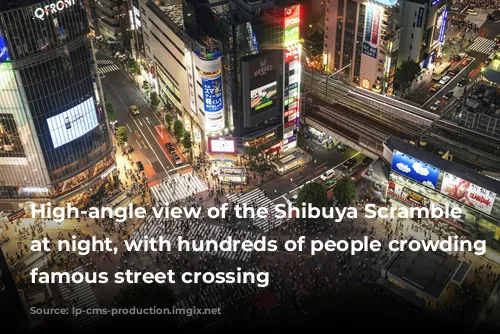
Accommodation: Finding the Perfect Spot
Shinjuku: Offers a wide range of accommodations, from budget-friendly options to luxurious hotels, and boasts convenient access to Narita Airport via train and bus. Hotel Sunroute Plaza Shinjuku provides excellent value for basic business hotels, while Park Hyatt Tokyo offers high-end luxury. For budget-conscious travelers, the contemporary capsule hotel 9 Hours Shinjuku-North, located one station north of Shinjuku, is a viable option.
Ueno: This eastern hub provides a more budget-friendly alternative to Shinjuku, with convenient train access to Narita Airport. Nohga Hotel, a new hotel, is a solid choice. In neighboring Yanaka, the guesthouse hanare and the traditional Japanese inn Sawanoya Ryokan offer unique experiences.

